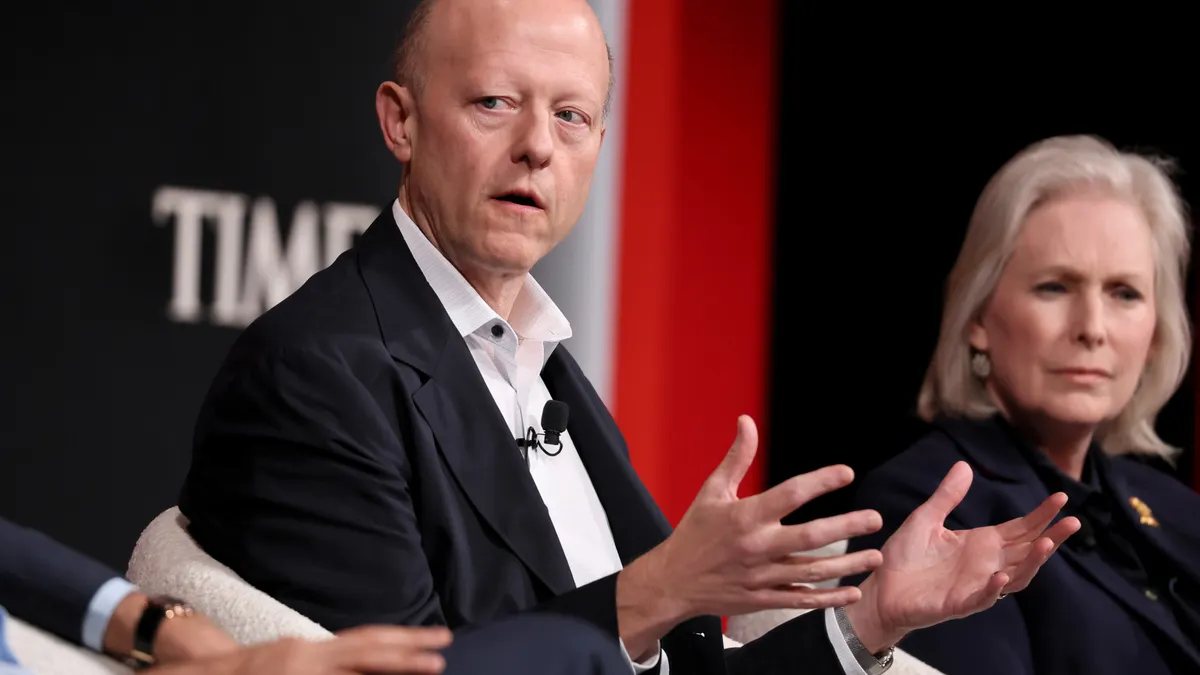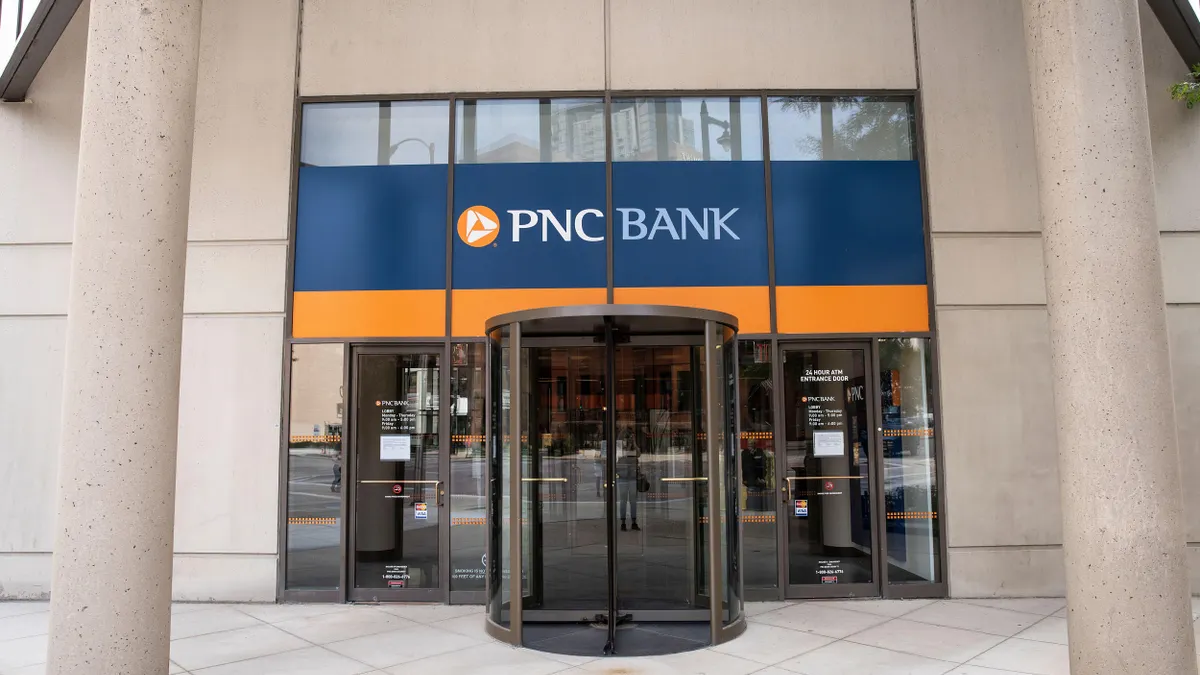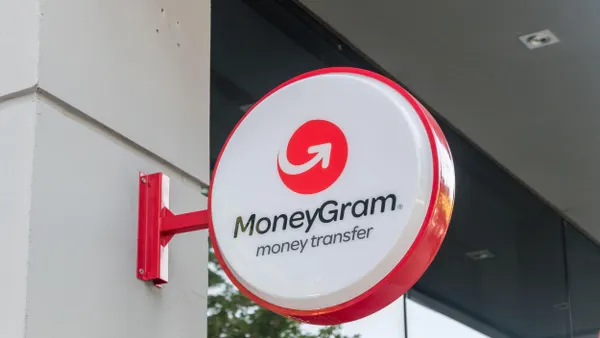Consumers ferry funds to their friends through Venmo and Zelle with relative ease and low costs, but cross-border payments — particularly for businesses — are significantly hairier.
Cross-border payments still often rely on a process whereby funds travel through a network of correspondent banks, adding time and fees along the way. Critics of this method point to its lack of transparency. Compared to consumer payments, business payments can require complicated know-your-customer (KYC) processes, and for more documentation to be exchanged compared to peer-to-peer consumer payments.
"New entrants tend to offer cheaper fees, faster transactions and a degree of automation that can be achieved via the use of application programming interfaces," said Nick Maynard, a lead analyst at Juniper Research.
Historically, banks have dominated the cross-border payments market. For consumers and small- to medium-sized businesses (SMBs) — entities that typically move smaller amounts of money — pain points center around high costs, transaction times that can take days, and the inability to get a line of sight on where a payment is in the process. The global average cost of sending $200 was 6.5% in the fourth quarter of 2020, according to the World Bank.
"There's all kinds of delays and fees associated with [legacy cross-border money transfer methods]," said Erika Baumann, a senior analyst at Aite Group. "You may or may not know what those fees are and then have to send a secondary transaction to make up for that if your recipient is short-paid, because of the fees taken during the correspondent banking process."
Among the market participants, Baumann said the largest bank players in cross-border payments have the deepest correspondent banking relationships — including JPMorgan Chase, Citi, BNY Mellon and Bank of America. Some prominent fintechs playing in the cross-border payment field include Wise (formerly TransferWise), Ripple, Rapyd, Banking Circle, dLocal and Payoneer.
In recent years, fintechs have tried to make cross-border business payments cheaper and faster. This has been carried out through two methods: cross-border payment rails that don't run on traditional bank networks; or tech solutions that allow clients to connect to legacy bank rails more easily.
While bank players still dominate the global money-transfer market for large corporations, fintechs are gaining market share for customers that move smaller amounts of money, particularly SMBs.
But the cross-border payment market is more complex than a "bank-versus-fintech" paradigm. The market is moving toward a 'coopetition' model, as banks and fintechs seek to serve clients that fall outside of their core customer bases. Additionally, the need for bank and nonbank networks to "talk to one another" is a driving force for fintechs and banks to cooperate more closely.
The market
There will be almost 14 billion business-to-business (B2B) cross-border transactions in 2021, Juniper Research found. The value of B2B cross-border payments will reach $35 trillion by 2022, the firm said. Other estimates, including from consultancy Ernst & Young (EY), suggest the value of global cross-border payment flows could be considerably higher, reaching $156 trillion by 2022. Of that, EY estimated $150 trillion will be B2B transactions — and that the total volume of cross-border payment flow is growing by 5% annually.
Most large banks rely on the Society for Worldwide Interbank Financial Telecommunication (SWIFT) cross-border payment network to carry out international payments. SWIFT has been rolling out a global payments initiative, SWIFT gpi, since 2017 to enhance cross-border transactions' speed and transparency, allowing them to settle faster (within a day, and often within minutes). Clients using SWIFT gpi can also pinpoint where a payment is in the process. More than 75% of all payments through SWIFT are carried out through SWIFT gpi, a spokesperson for the cooperative said.
Analysts say banks rule the roost on business cross-border payments for large corporate entities because of the huge volumes of money they're moving, and the benefit of the additional client relationships banks have with large corporations.
Hugo Cuevas-Mohr, president and CEO of Mohr World Consulting, estimated 25% to 30% of the business cross-border payment market, by number of transactions, is up for grabs by fintechs. But banks dominate the market because they provide additional services.
"Knowing your client is very important for any financial institution [moving funds], and knowing a business is a little bit more complex," Cuevas-Mohr said. "You need more information with a paper trail."
While SWIFT gpi helps move the needle on addressing cross-border payment hurdles, it hasn't eliminated all sources of friction in the space — particularly when dealing with banks that aren't using the SWIFT gpi system.
"Not every bank in every region, and every country is going to [have] SWIFT gpi, so there has to be reliance on the correspondent banking model to some degree," Baumann said.
Fintechs' own networks
Nine-year-old Ripple and 11-year-old Wise are among prominent fintechs running their own cross-border payment systems.
Wise's cross-border payment system for businesses operates in a similar fashion to its consumer-to-consumer international money-transfer offering. The company has a network of local accounts around the world, from which recipients are paid, and the money never crosses borders. This makes sending money cheaper and faster than traditional foreign-exchange methods, with time frames ranging from instant (30% of the time) to two days at most. Wise also has bank clients with which it partners to offer foreign-exchange services.
Wise moves $72 billion per year, of which 20% to 25% are business payments, said Alastair Thompson, the company's global head of business development and partnerships. A significant proportion of Wise's business clients have 50 or fewer employees, and Wise is building technology to make it available to midsize businesses with up to 250, Thompson said.
By partnering with tech companies like accounting platform Xero and corporate expense management platform Emburse, Wise is able to expand its reach among midsize companies. But Wise, which has a one-time transaction cap of $1 million, isn't yet set up to serve large corporations that move significant volumes of cash, and it isn't able to do forward contracts, which lock in exchange rates for the purchase or sale of a currency at a future date.
"At that top end of business size, there are multiple reasons why we're not there yet," Thompson said. "Our sweet spot for payments size is in the tens of thousands up to the hundreds of thousands as a single payment." Single payments over $1 million are typically carried out through SWIFT, he said. Wise claims it saves its customers $1 billion a year in transaction fees compared to legacy bank cross-border payment methods.
Meanwhile, Ripple works with banks and business clients to offer blockchain-based cross-border payment solutions.
"The current cross-border payments infrastructure is built on a system that was developed pre-internet," said Pat Thelen, a vice president and managing director at the company. "The result is that remittance costs are disproportionately high compared to the small values of these payments and they often negatively impact the people who have the least."
Ripple's payment network, RippleNet, uses blockchain technology to move money instantly while providing transparent fees, real-time payment status and certainty, Thelen said. RippleNet also offers an on-demand liquidity service where digital asset XRP acts as a bridge between two currencies. But not all clients use that; rather, some use RippleNet's messaging and settlement layer and are supported by a liquidity provider on the network to complete cross-border money transfers.
RippleNet allows users to send cross-border payments in three seconds, with less than 1% cost to the sender, the company said. American Express is a notable U.S. client, but 90% of Ripple's cross-border clients are located outside of the U.S., including Banco Santander, Japan-based SBI Group, Siam Commercial Bank and others, Thelen said. In total, Ripple has "hundreds of clients," and in 2020, processed nearly 3 million transactions over RippleNet, which represents nearly fivefold volume growth compared with the prior year, Thelen said.
While a higher proportion of activity on Ripple's cross-border payments network is for consumers, the company is capturing growing demand from small businesses, Thelen said, including for cross-border supplier payment use cases.
XRP is at the center of a lawsuit the Securities and Exchange Commission (SEC) filed against the company in December.
Network providers
Other fintechs, including Payoneer and Rapyd, are helping businesses and financial companies more easily access legacy bank-led cross-border payment rails.
Payoneer, which in February announced plans to go public through a merger with a special-purpose acquisition company, said all of its payment volume is business payments. It processed more than $44 billion in payment volume last year, according to a recent SEC filing. Charles Rosenblatt, the company's chief strategy officer, said "upwards of 80%" of Payoneer's payment volume is cross-border transactions.
"We don't feel like we need to use alternate rails to the banks," Rosenblatt said. "We use SWIFT to move money in different scenarios, so what we need to provide is a better user interface, user experience and compliance framework."
Payoneer, and companies like it, differentiate themselves with a more customized and user-friendly interface for their clients.
"Banks and their functionality are not really built for mass payouts," Rosenblatt said. "For our clients, we create an easier experience than using the bank [and] we also have more features and functionality than most of the banks do."
Brendan Miller, head of global product marketing for Rapyd, said the company uses bank money transfer methods, but through its proprietary application programming interface (API), developers can tailor user experiences. Rapyd's API allows clients access to payments, checkout, collection of funds, disbursements, compliance and card issuing.
The future of bank-fintech coopetition
Citi processes between $4 trillion and $5 trillion in payments a day, most of which are business-to-business payments (it doesn't break down the proportion of those that are cross-border transactions). The bank has been investing in efforts to improve the client experience with cross-border payments while enhancing transparency and speed. This includes efforts to route payments to nonbank channels, including digital wallets; building tools to improve communication with clients about cross-border payments; and tapping advances in industry messaging infrastructure, including SWIFT gpi.
"SWIFT gpi is like putting a FedEx tracking chip on a payment, so you effectively know where, at any point of time, a payment is," said Manish Kohli, Citi's global head of payments and receivables. "While SWIFT gpi doesn't expedite payments on its own, the increased transparency and payment data help banks like Citi route cross-border money transfers better, sometimes significantly improving transfer times."
The bank has also built client-facing tools that can be used for cross-border transactions, including Citi Payment Insights, which includes status updates through a visual tracker; and Citi Service Insights, which allows clients to communicate with the bank about payments and track inquiry statuses.
On fintechs, the bank said it doesn't see them as competition because many nonbank payment providers are Citi clients. "With these payment companies, we collaborate," Kohli said. "Some, we make investments in, and some we use as components of a solution."
He noted a partnership between PayPal and Citi that allows the bank's institutional clients to make payments into customers' PayPal digital wallets through Citi's cross-border payments platform.
Large banks are also tapping emerging technologies, including blockchain, to improve cross-border money transfer processes. JPMorgan Chase, for example, said in April it was using blockchain to improve money transfers between financial institutions globally, including payments originating from Taiwan banks to beneficiary banks in other markets.
As banks invest in technology to meet client demand, some industry watchers say bank-led innovation on cross-border payments is at least partly driven by fintech pressure.
"I think they are very concerned about [fintechs]," said Vinay Prabhakar, vice president of Volante Technologies, a cross-border payments technology company that works with banks and fintechs. "They have a level of agility, a level of technology capability, and they have a lack of legacy that enables them to move much faster."
As banks and nonbanks innovate, competition may ultimately give way to coopetition, in which bank and nonbank payment methods become increasingly interconnected. In 2019, for example, a Ripple executive said its offering "can be very complementary" with SWIFT. Wise said in an April document that one of its goals for business payments is to "receive funds via SWIFT as a Wise for Banks partner."
The challenge for many nonbank closed-loop payment networks is the lack of interoperability with existing cross-border payment rails such as SWIFT.
"There are [payment] providers that have been operating in this closed-loop system that have seen the limitations of their capabilities in terms of reach, and some of these [nonbank] payment providers are actually integrating into the traditional banking rails to be able to actually build that reach," said Isabel Schmidt, head of direct clearing and asset account services products at BNY Mellon.
BNY Mellon is one of the top five banks in the U.S. for cross-border payments, Schmidt said, declining to provide figures but adding that of the hundreds of thousands of transactions carried out by BNY Mellon each day, the vast majority are cross-border.
What's likely to come next, Schmidt said, is a move toward a more integrated cross-border payments ecosystem connecting various bank and nonbank participants, with each targeting a specific client base.
"All of the players, I think, will focus on, or try to find their niche, in terms of what really differentiates them and where they can add value," she said. "The payment landscape overall in the next few years will actually become somewhat more complicated before it gets a lot simpler."



















